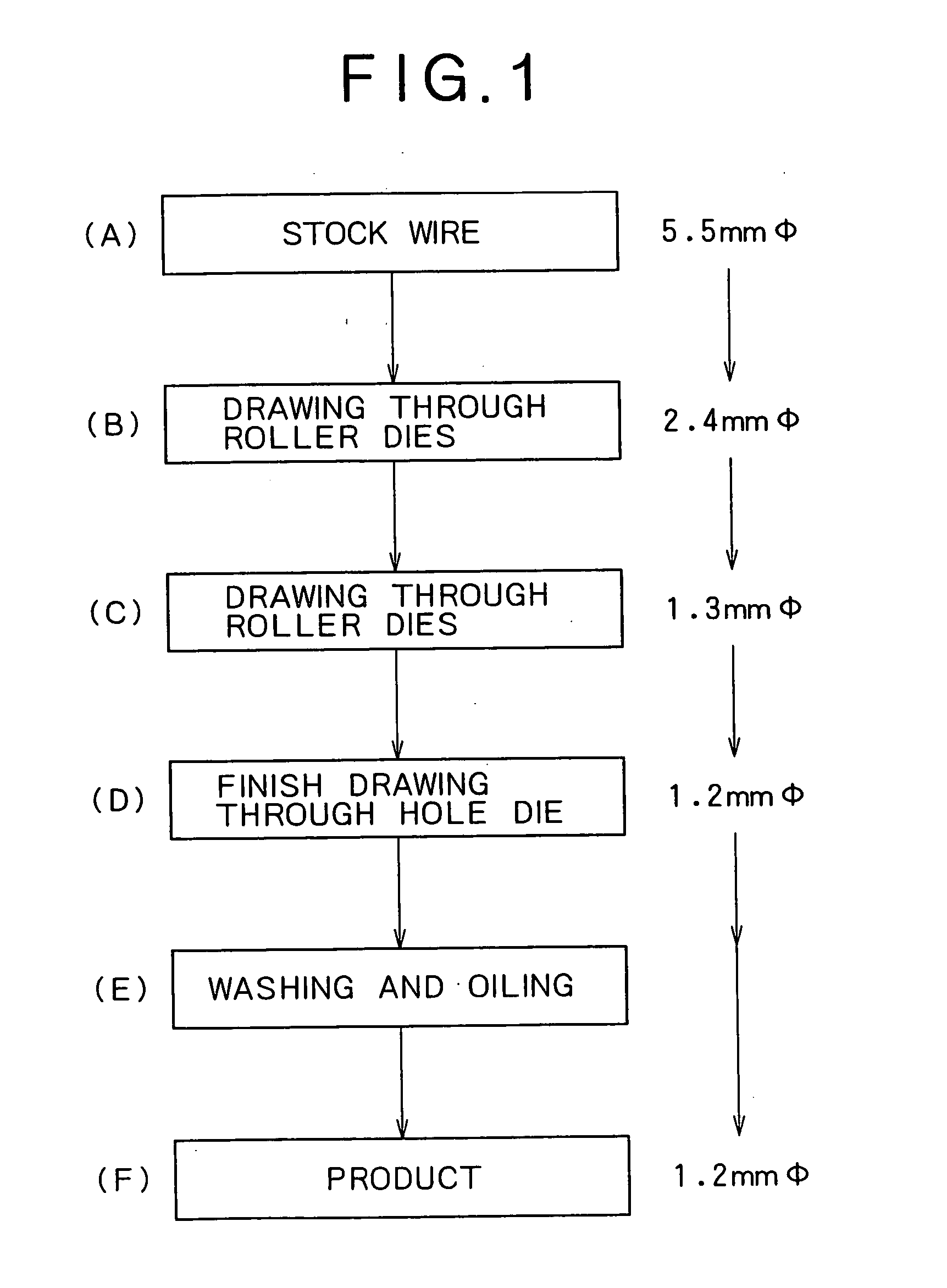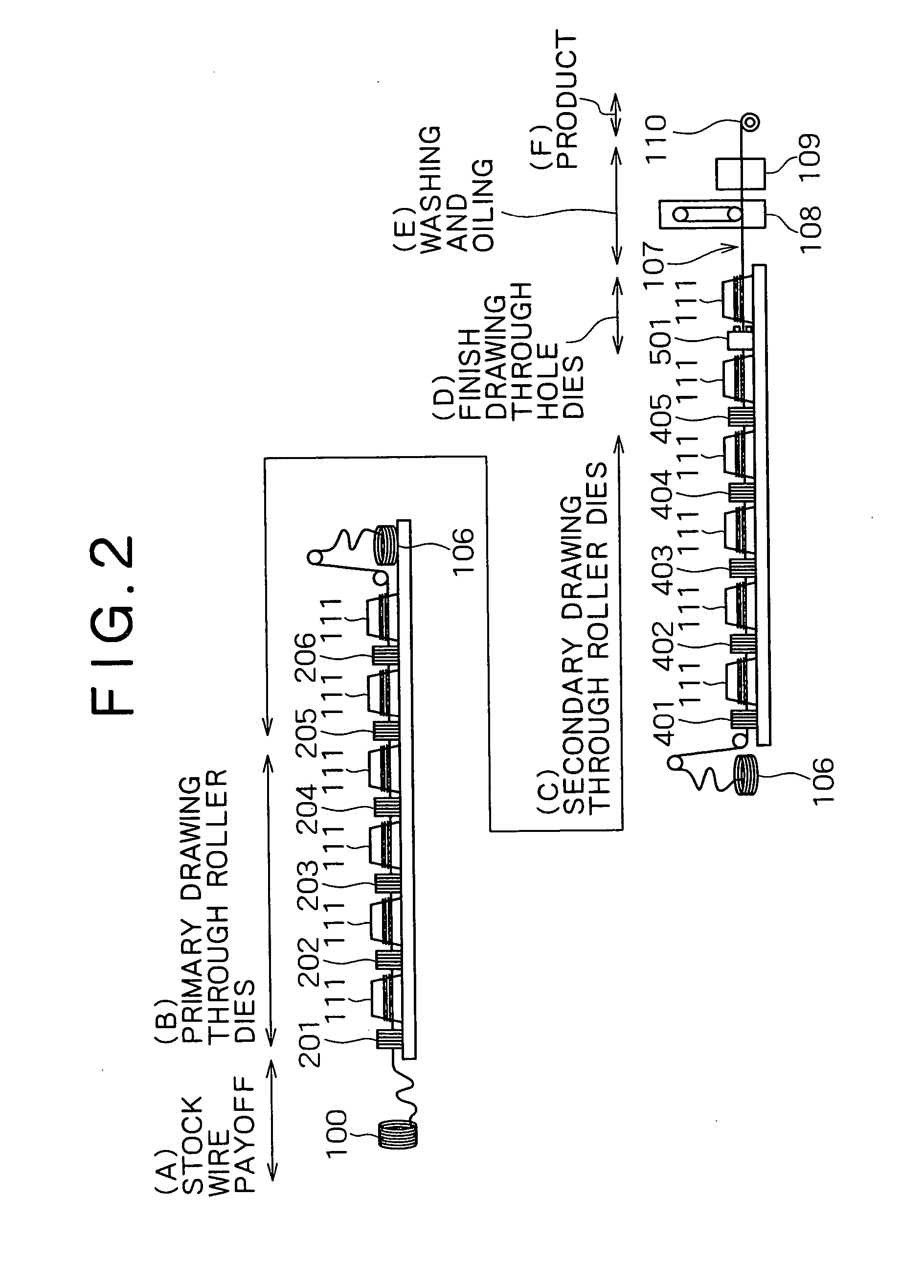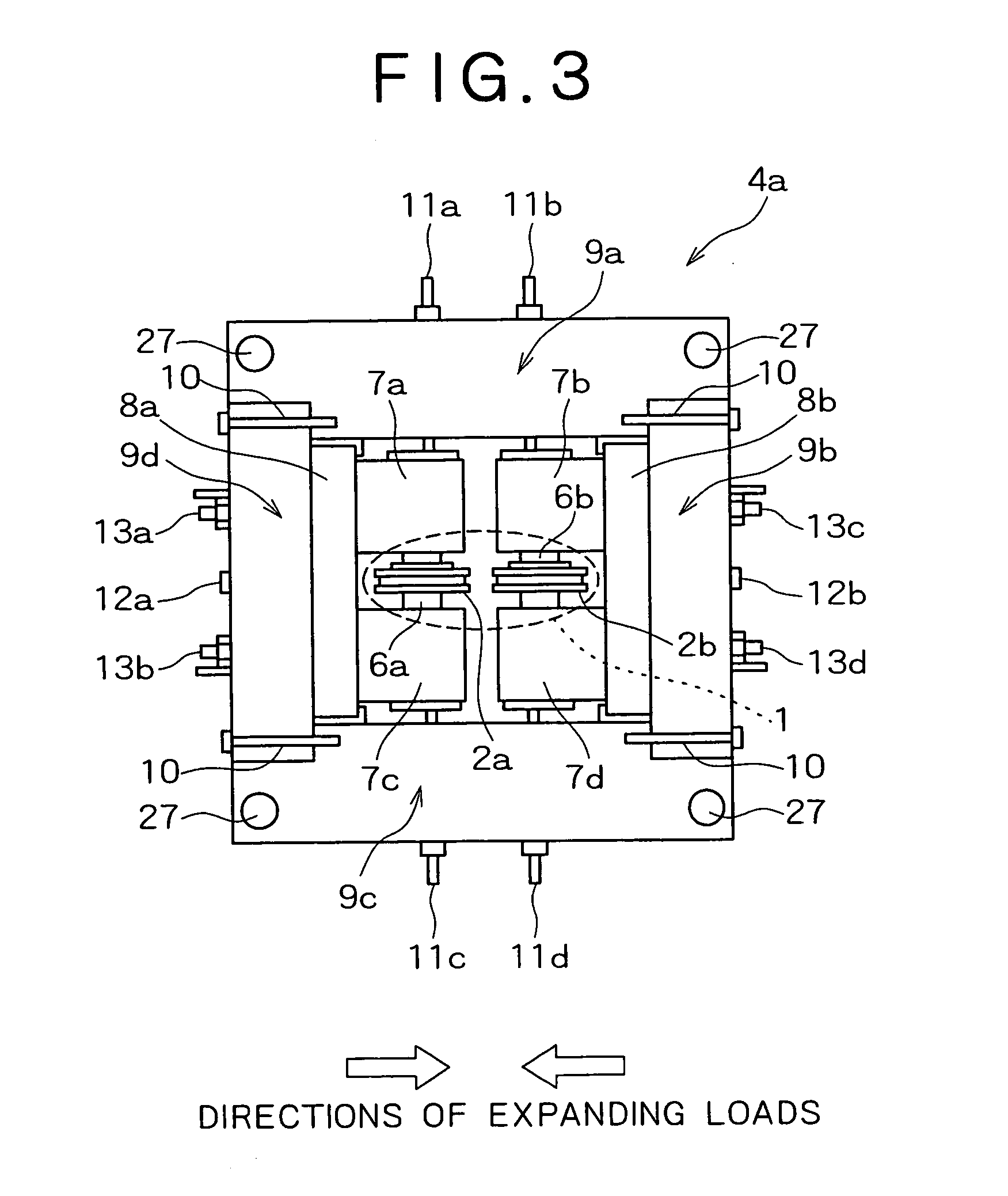Method of producing solid wire for welding
a solid wire and welding technology, applied in the direction of soldering apparatus, drawing dies, manufacturing tools, etc., can solve the problems of high feedability degradation, easy scraping of excess lubricant, drawbacks of solid wire for welding with copper plating or lubricant coating, etc., and achieve high-efficiency welding solid wire
- Summary
- Abstract
- Description
- Claims
- Application Information
AI Technical Summary
Benefits of technology
Problems solved by technology
Method used
Image
Examples
example 1
This example demonstrates the production of a welding solid wire by the process shown in FIG. 2. This process consists of the primary drawing step (B) and the secondary drawing step (C), both by means of roller dies. The two drawing steps made a high-strength stock wire (5.5 mm in diameter) into a welding wire (1.2 mm in diameter). Before the primary drawing step (B), the stock wire was coated with a dry solid lubricant for drawing. Before the secondary drawing step (C), the half drawn wire was also coated with a dry solid lubricant for drawing. Incidentally, this example did not include the step of finish drawing by means of the hole die 501 (shown in FIG. 2) after drawing.
The drawn wire (which has the diameter of the product wire) underwent the washing step (E) by means of a simple washing bath 108 containing no organic detergent, acid or alkali, so that the wire surface was cleaned of residual lubricant for drawing. In the subsequent oiling step (E), the washed wire was coated...
example 2
Samples of welding solid wires (free of copper plating), 1.2 mm in diameter, were prepared from high-strength stock wires, 5.5-2.4 mm in diameter, under the same conditions as in Example 1, except that hole dies were placed in the first drawing step (B) for continuous drawing such that Rd was 50.7% (sum of reduction in diameter). The stock wire was coated with a dry solid lubricant before the primary drawing step (B) with hole dies. The half drawn wire was not coated again with the dry solid lubricant in the secondary drawing step (C) with roller dies. In other words, drawing in the secondary drawing step (C) was accomplished with the help of residual lubricant only. The primary drawing step (B) relies on four hole dies of WC—Co cemented carbide arranged in series and three roller dies arranged in series thereafter.
The stock wires were drawn by means of the hole dies under the same condition. The effect of the drawing lubricant (which varies in composition) on drawability in the ...
PUM
| Property | Measurement | Unit |
|---|---|---|
| distance | aaaaa | aaaaa |
| distance | aaaaa | aaaaa |
| diameter | aaaaa | aaaaa |
Abstract
Description
Claims
Application Information
 Login to View More
Login to View More - R&D
- Intellectual Property
- Life Sciences
- Materials
- Tech Scout
- Unparalleled Data Quality
- Higher Quality Content
- 60% Fewer Hallucinations
Browse by: Latest US Patents, China's latest patents, Technical Efficacy Thesaurus, Application Domain, Technology Topic, Popular Technical Reports.
© 2025 PatSnap. All rights reserved.Legal|Privacy policy|Modern Slavery Act Transparency Statement|Sitemap|About US| Contact US: help@patsnap.com



